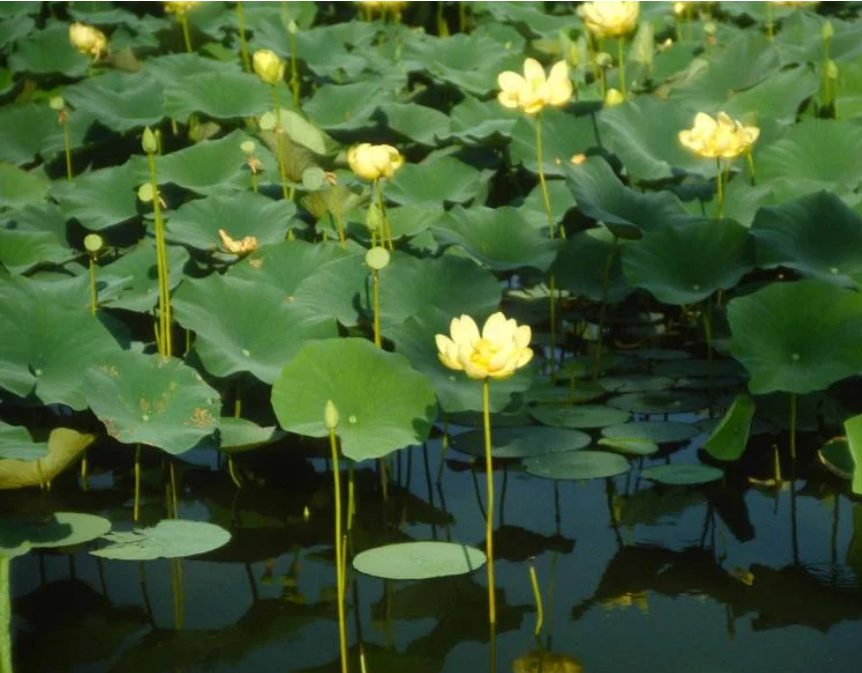Written by Aggie Morris, Development Coordinator
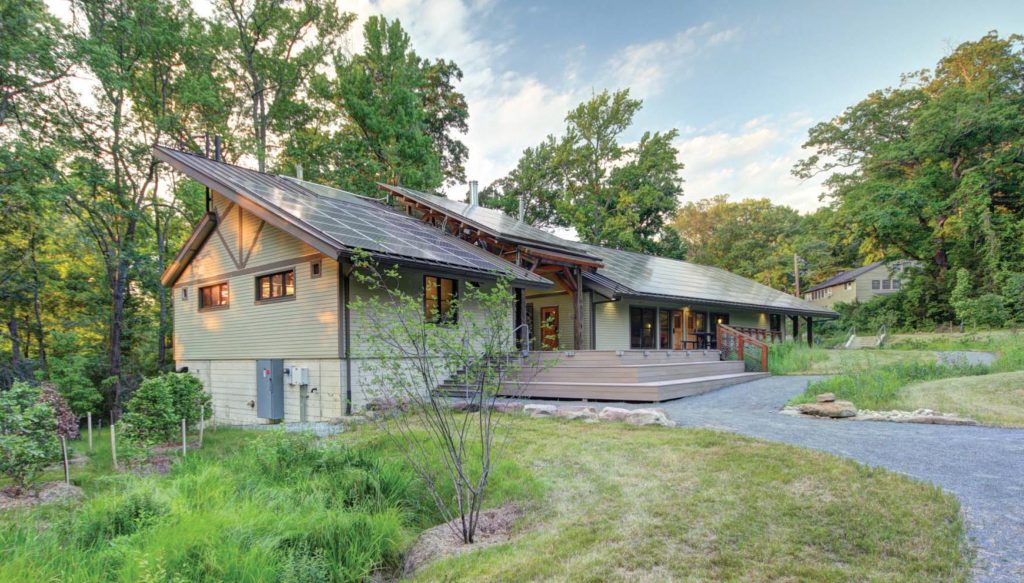
Our Morris & Gwendolyn Cafritz Foundation Environmental Center is a multi-purpose space devoted to environmental education and sustainable, enduring functionality. As a fully certified Living Building, it must meet net zero energy, water, and carbon neutral requirements as well as consist of non-toxic components. And in keeping with the Foundation’s mission, the structure works in harmony with nature.
Within our Living Building are several whimsical murals painted by two legendary AFF staff members, Sharon Rabie and Pat Biles.
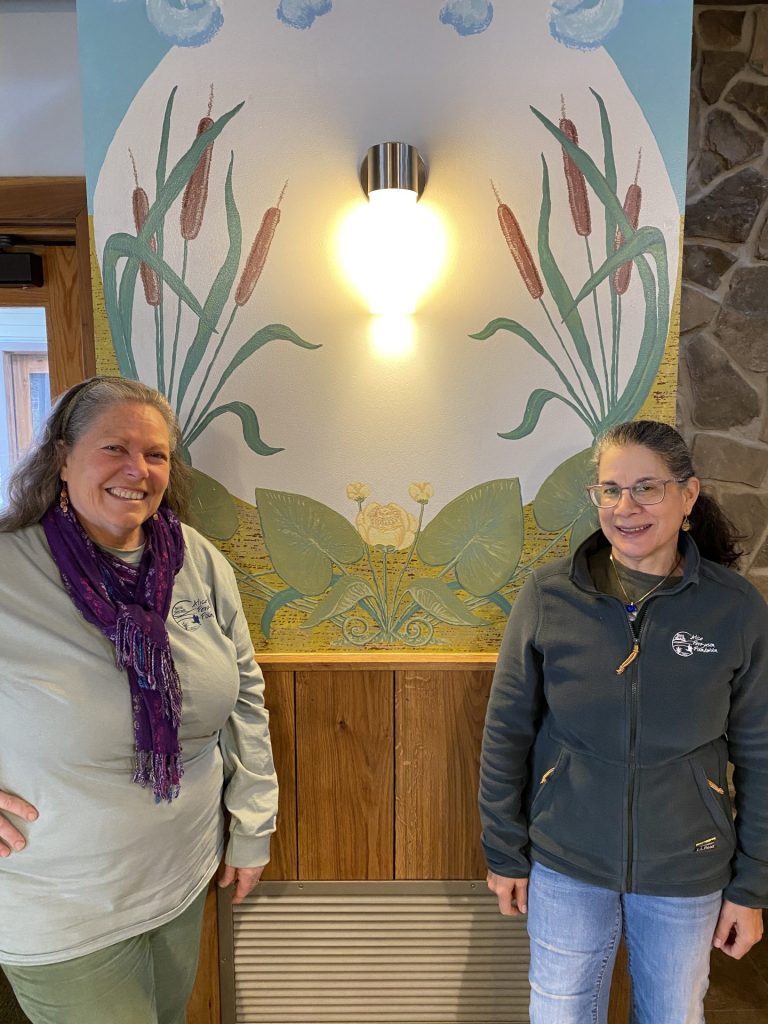
Mural Artists and Foundation Educators
An educator since 2015, Pat has a background in analytical chemistry and art. After being a professional scientist, Pat discovered teaching. She states, “[Teaching] totally fits my niche. When I quit being a professional scientist (to become a stay at home Mom), I was kind of bored, but I wanted to still have fun. I found out I could teach children and it was very fulfilling to me… To give them something back. It’s fun and it’s educational, and it’s very helpful to the children and the community.” Pat’s family has a long history with AFF, which is how she was introduced to the organization. Her mother-in-law was an educator, and her husband helped construct some of the facilities on the property. In addition, her father-in-law served on the board. Many fond memories of Pat’s are associated with AFF, especially her children coming to feed the animals.
An AFF educator since 1995, Sharon has a passion for agricultural and environmental education. Having grown up on a farm in Michigan, Sharon is well acquainted with such an environment. With a dual major in biology and art, Sharon earned an Interpretive Naturalist degree. Following her time in the classroom, Sharon was a Park Ranger for many years. She states, “My free spirit needed to get outdoors.” After spending 11 years with the National Park Service, she realized she had found her passion in connecting children and adults to the farm and the land. She loves live animal interaction and is also deeply involved with organizations such as 4-H.
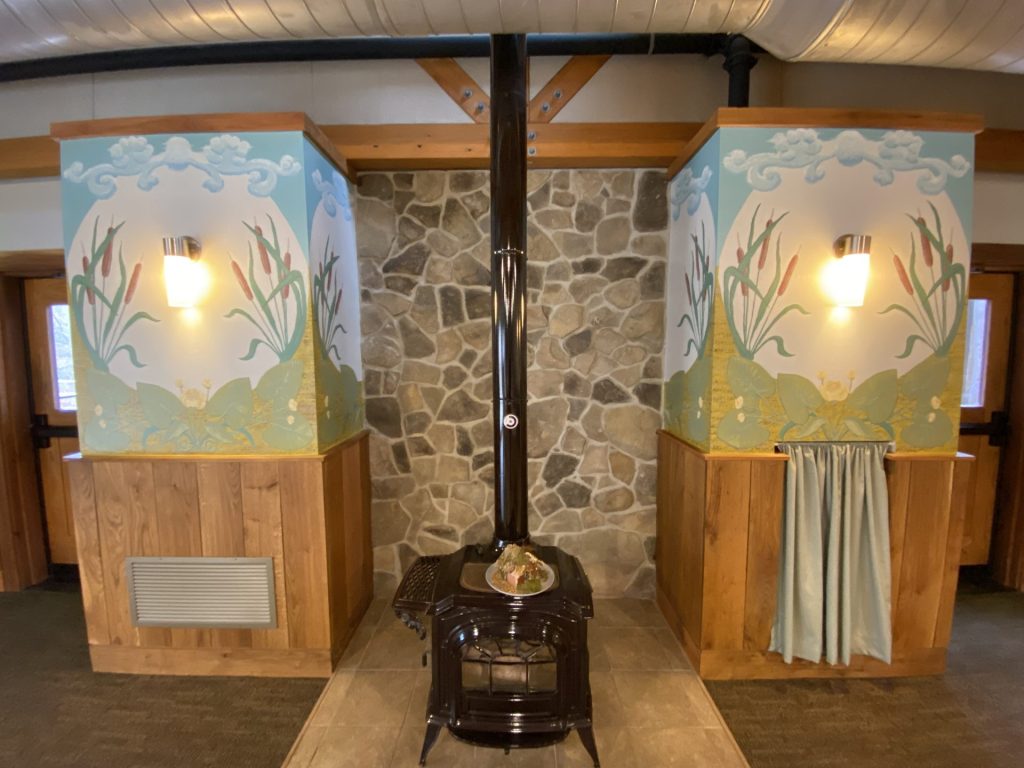
Starting with the inside of the Living Building are two paintings, framing the wood stove on either side. The murals depict a natural scene with wetland plants. Cattails, the universal symbol for a marsh, perfectly encircle the fixtures on the wall. The curled roots and exaggerated lengths continue to frame the space in a stylized manner. The clouds rest at the top of the murals, similar to an Art Deco style. The plant in the center is a Spatterdock, a plant that students can spot from the boardwalk. Spatterdock has food and medicinal value, and is beautiful, similar to a water lily. The leaves rise and fall with the tides, sometimes becoming submerged.
The viewer is also presented with a repetitive design at the bottom of the mural, where the Earth is depicted. Similar to the way Piscataway pottery is crafted, cordage was created by wrapping rope around cardboard, and then pressed into paint to create a decorative pattern.
The images are representative of the surrounding environment with a historical touch. The art was to represent the history of the grounds, as well as pay homage to the works of Alice Ferguson. The entire mural was hand drawn and a projector was used to flip the image on the adjacent wall to make it symmetrical.
Just on the other side of the wall, through the breezeway, more murals can be found in the restrooms. These feature several animals native to the region. In the girls’ restroom, there is a beautiful scene of woodlands.
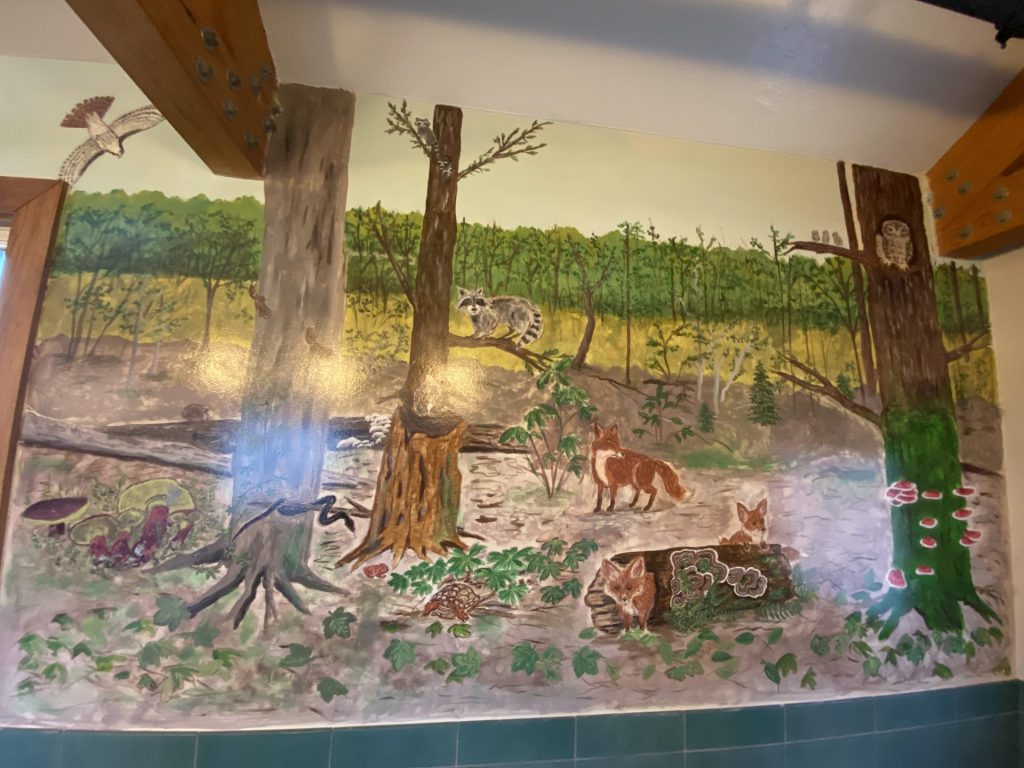
The woodlands landscape introduces the viewer to a variety of creatures and critters. True to a natural environment, the depicted animals are those that students would find in their natural habitat in our woods just outside. A tree scene with foxes, raccoons, snakes, owls, and even mushrooms is presented. Little foxes burrow and play in the foreground. To the left, a snake coyly wraps around a branch. A raccoon sits behind them in the trees. The more you stare at the mural, the more you discover!
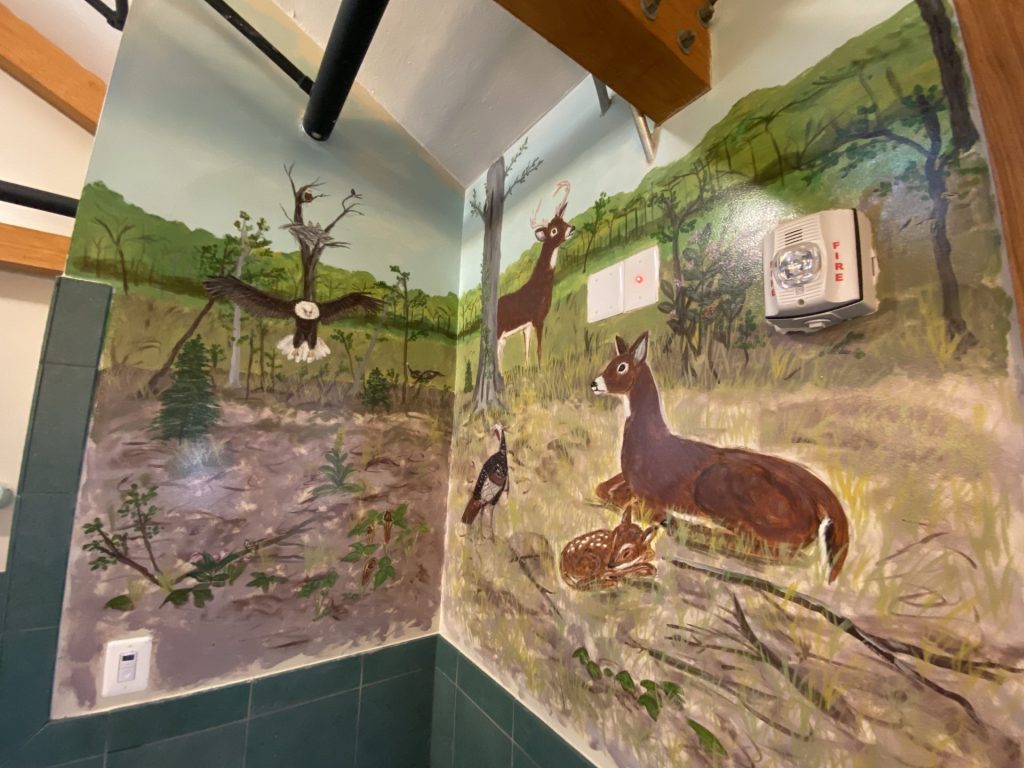
Native plants are depicted, including a Milkweed plant covered in various species of butterflies. Mice can also be spotted, just as they are seen on habitat hikes. Two deer and a fawn are easily observed as well.
On the adjacent wall, a striking eagle spreads its wings, staring directly at the viewer. Maybe students will spy our own bald eagle family during their visit? Other birds include a turkey, a woodpecker, a vulture, and Goldfinch (little songbirds!).
Differing from the murals inside the Living Building, the murals in the restrooms are depicted with a more realistic approach, especially including the eyes of the turtle!
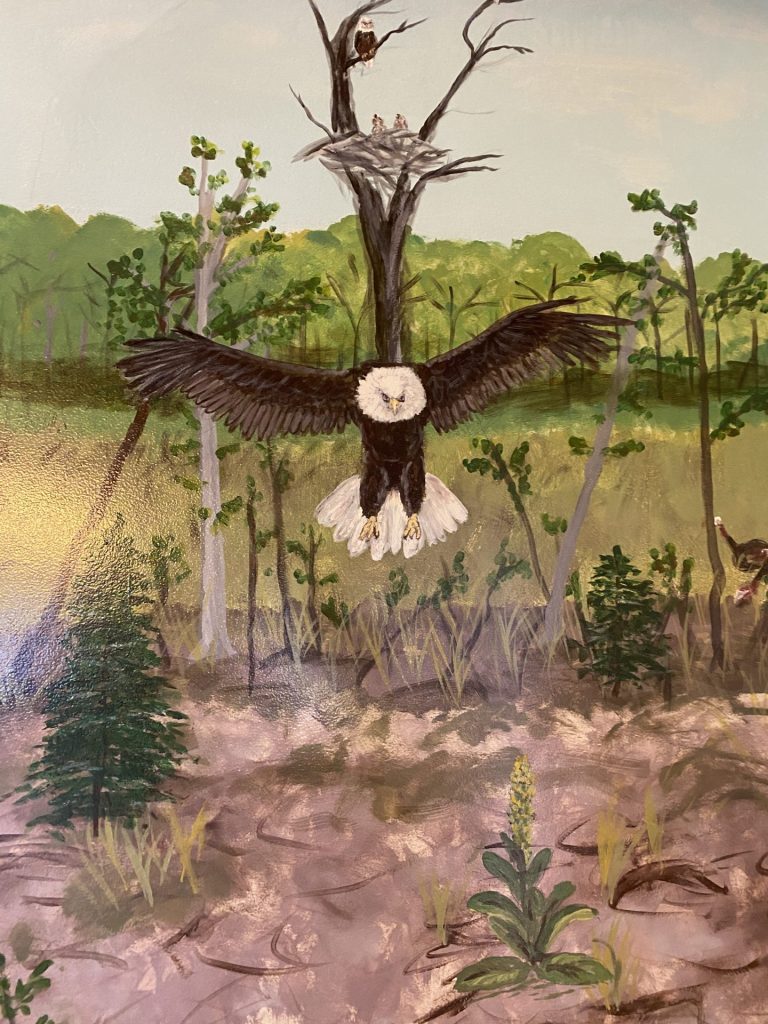
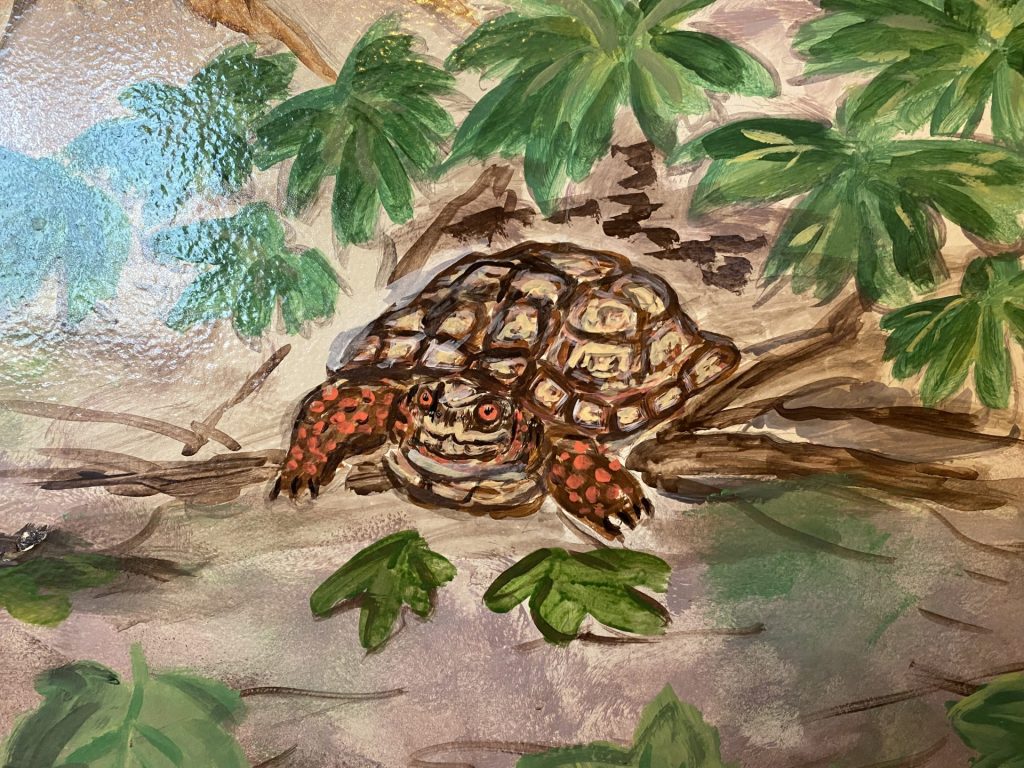
Pat’s favorite parts to paint were the details, and the most challenging part was the leaves. She tried using stencils, but found that they made them appear stiff. She also found that painting freeform was a lot easier and more fun. Pat states, “I’m more free, I actually used my hands!”
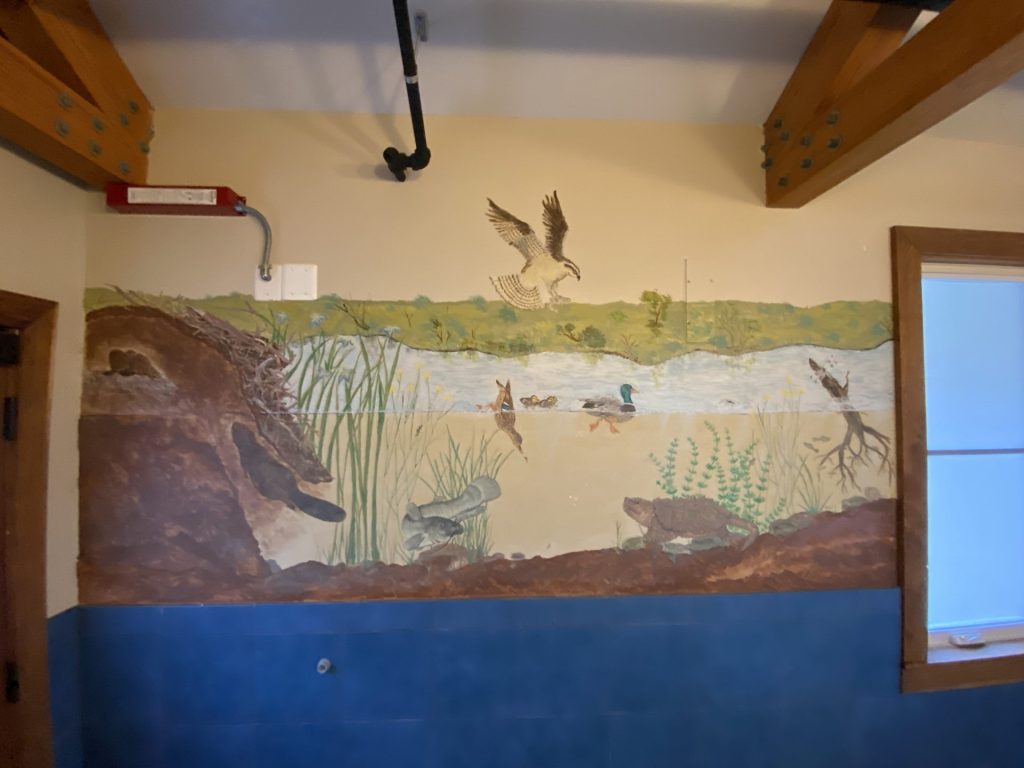
Adjacent to the girls’, in the boys’ restroom, is a magical scene of wetlands, specifically, of a pond. An underwater landscape with over 60 organisms is depicted on the walls. Sharon jokes, “My intent was to make you feel like you’re underwater, so hold your breath!”
A beaver lodge with mud and sticks frames the scene on the left. The beavers are swimming up to say hi to the kits! Towards the bottom of the pond, a catfish and snapping turtle are visible.
Also within the scene is a native flower, Sweetflag. Fun fact: although originally painted yellow, the yellow color indicates an invasive species, so these flowers were painted with blue overtop!
Two ducks are spotted on the surface of the water, one reaching for its prey. The difference in their coloring signifies one male and one female. Just above them, an osprey is catching a fish.
Similar to the woodlands scene in the girl’s restroom, the more you stare, the more organisms you can identify. Small aquatic insects, dragonflies, minnows, snails, crayfish, larvae, water beetles, and tadpoles are also present!
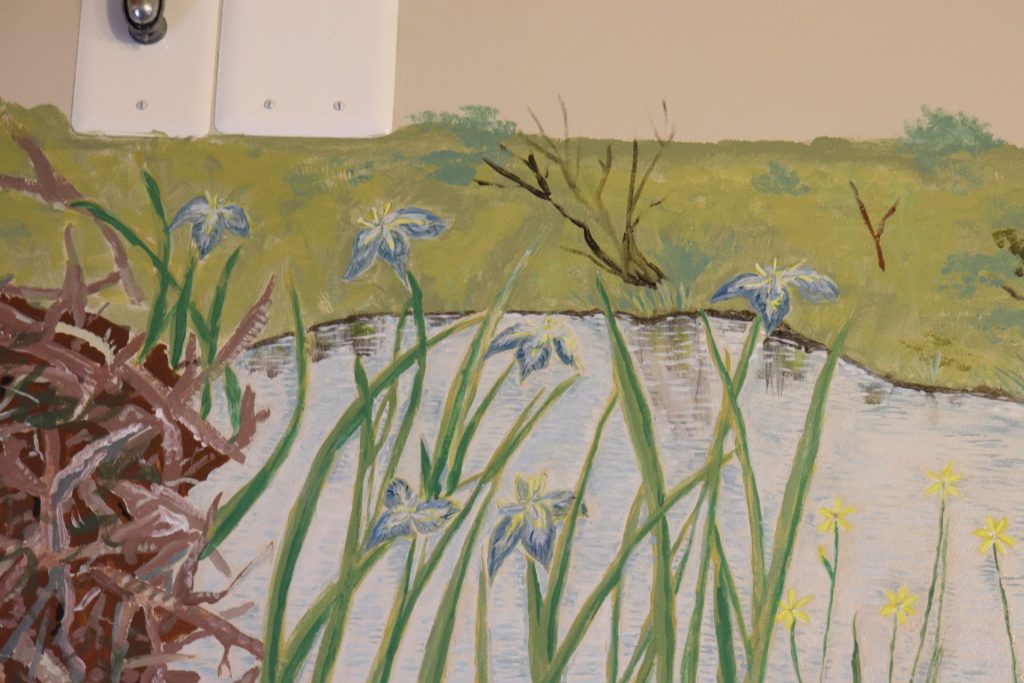
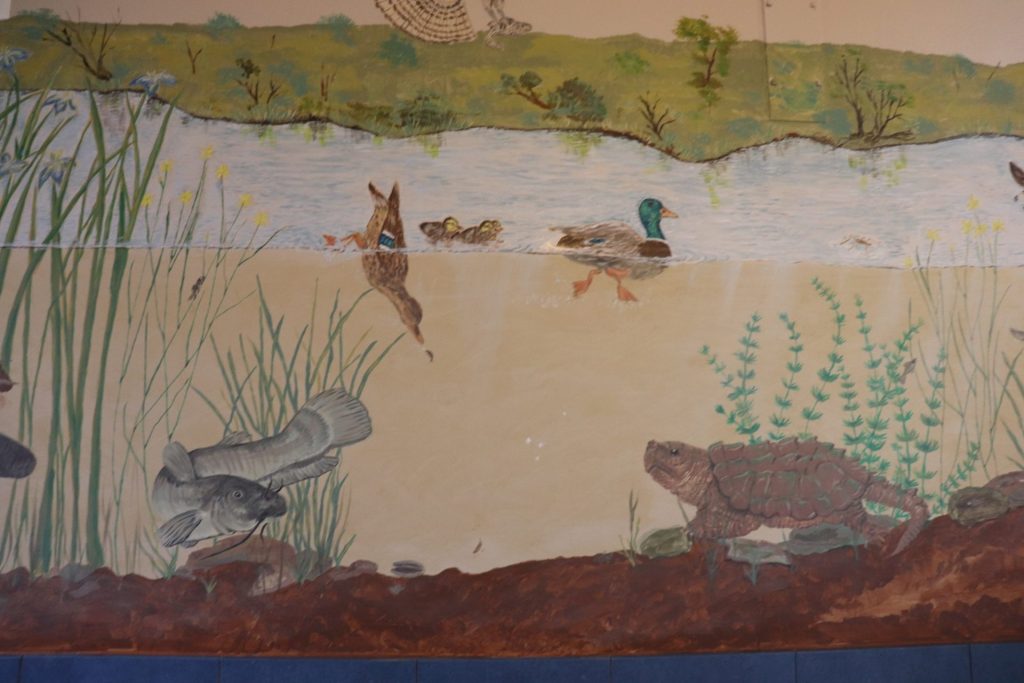
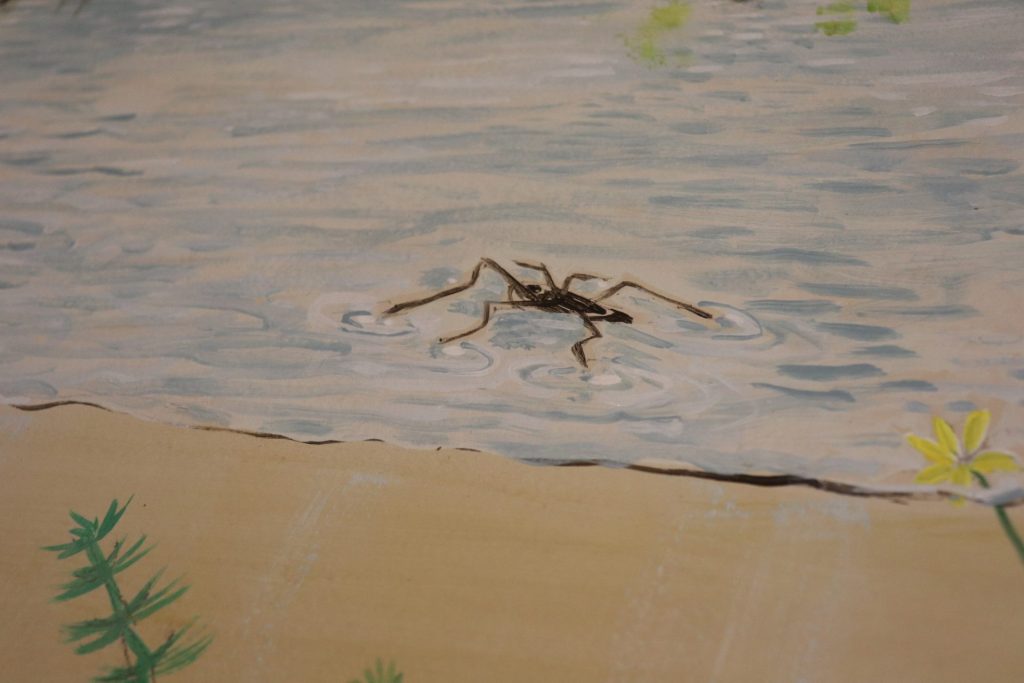
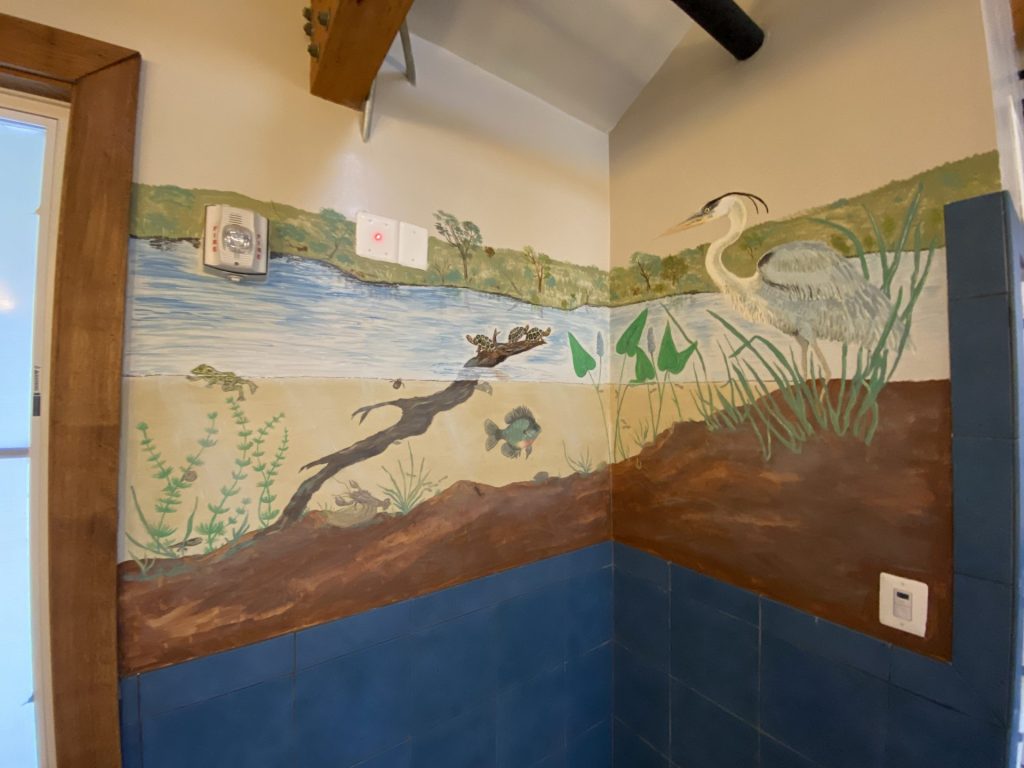
On the adjacent wall a great blue heron stands tall, which is one of the top predators in the area.
The most enjoyable part for Sharon was making it appear the viewer is underwater. Subtle rays of sunlight decorate the water. She enjoyed painting the reflections and testing different methods to achieve the transparent effect.
Creating the art for a living building had its own challenges. Both artists had to carefully select the paints to match the stringent guidelines of the Living Building challenge. For example, the paint could not consist of turpentine or oil and every sample had to be examined. Several types of paint were tested, including overcoats. The murals took about three to four months to complete, and the process included freehand drawing with a pencil, followed by paint.
Thanks to the incredible work of these artists, students are able to view these magical scenes of nature and relate it to what they learn in our environmental programs. The scavenger hunt aspect of it is the best part, since the same animals and plants depicted in the murals will be seen on habitat hikes. Students especially love using their new knowledge to identify the organisms. The remarkability within the murals is appreciated by all and is captured by Sharon’s statement, “There are a lot of little details [in the murals], just as there are in nature.”


